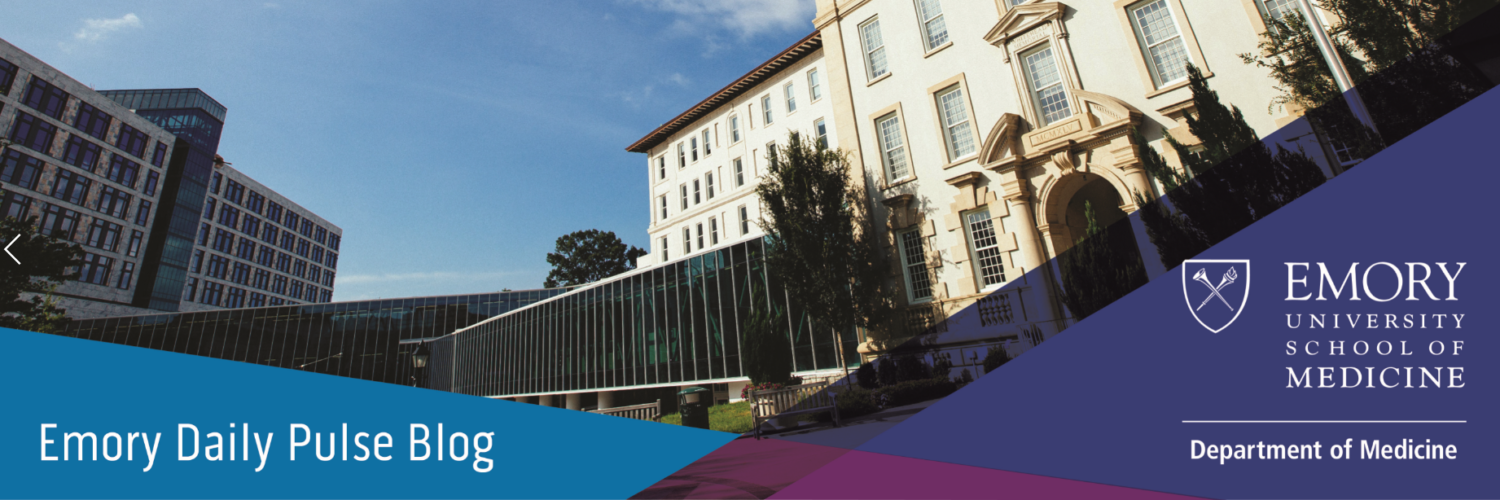Monthly case from Grady Memorial Hospital
“More Than Just Stool: A Unique Case of Diarrhea”
Submitted by:
Michael A. Gallagher, MD
Assistant Professor of Medicine
Department of Medicine, Division of Hospital Medicine
Emory University School of Medicine
Edited by: Manpreet Malik, MD
STORY AND CASE
A 50-year-old man presented with one week of diarrhea. He reported ten voluminous, watery bowel movements each day, nausea, and frequent non-bloody, non-bilious emesis. Additional symptoms included increasing right-sided abdominal pain, generalized pruritus, and diffuse weakness. Eating meat exacerbated both his abdominal discomfort and pruritus.
His history included Ulcerative Colitis, Primary Sclerosing Cholangitis, Clostridium difficle treated via total colectomy with ileoanal pouch, and treated disseminated Mycobacterium avium complex. He had previously travelled to both rural Indonesia and Bermuda within the past five years.
Despite normal vital signs, he appeared uncomfortable with diffuse abdominal tenderness elicited on palpation without peritoneal signs and a blanching erythematous rash overlying his sternum.
Laboratory analyses revealed a white blood cell count of 17.7 K/μL with absolute neutrophil count of 11,830 K/μL, and absolute eosinophil count (AEC) of 3,510 K/μL, a sodium of 132, and creatinine of 2.0, as well as normal lactate and inflammatory markers. Stool studies, including Clostridium difficle toxin, common bacteria and viruses associated with diarrhea, and ova and parasites, yielded negative results. CT scan of the abdomen and pelvis revealed no acute processes. Further labs revealed low IgG, normal tryptase, normal T- B- and Natural killer cell levels, negative IgE alpha gal, and negative Strongyloides IgG.
At this time, his abdominal pain intensified, diarrhea became more frequent and bloody, rash spread across his chest wall, and absolute eosinophil count rose to 7,900 K/μL. Gastroenterology performed a colonoscopy and enteroscopy which revealed patchy erythematous mucosa in duodenum, mid-ileum, and rectal pouch. Tissue biopsies of each revealed prominent mucosal eosinophilia.
FINAL DIAGNOSIS?
Hypereosinophilic syndrome
Disease Trajectory of Interest:
Treatment commenced with intravenous steroids, and his abdominal pain, rash, and eosinophilia significantly improved.
DISCUSSION
Hypereosinophilic syndrome (HES), while uncommon, is a clinically significant and potentially lethal multi-system disorder.12 HES is defined as by the presence of (1) AEC > 1500 K/μL blood on 2 examinations, at least month apart, and/or tissue hypereosinophilia, (2) organ damage or dysfunction due to hypereosinophilia, and (3) exclusion of other conditions as reason for organ damage.1 Each presentation is unique, dependent upon the organ systems affected and degree of severity. Interestingly, the AEC level does not correlate with degree of symptom severity.2 Most often, eosinophil-mediated damage affects the skin, heart, lungs, brain, and gastrointestinal system, including enteritis and colitis.2
While acute diarrhea is most often infectious in origin, this patient’s negative infectious workup and lack of clinical improvement with supportive care required a more comprehensive evaluation, including critical analysis of the white blood cell differential and unexplained rash. Given the severity of eosinophil mediated organ damage, a repeat blood draw one month later to prove HES is not practical.1 Rather, an aggressive and comprehensive workup of hypereosinophilia must be untdertaken.2 Following the exclusion of alternative etiologies, one should pursue tissue biopsy of the affected organs.3 Once pathology confirms the presence of eosinophils, the diagnosis of HES is confirmed.
The gut reaction is to initiate treatment immediately with steroids. However, once pathology confirms the presence of eosinophils, it is imperative to ensure that Strongyloides has been excluded by ELISA testing before initiating treatment with steroids.45 If not, introduction of an immunosuppressed state would enable Strongyloides to cause a potentially life-threatening infection.25 If clinical severity due to HES does not afford such time to await ELISA results, such as in cases of cardiac, neurologic, or pulmonary involvement with hypoxia, urgent treatment with steroids and empiric ivermectin is indicated.23
CITATIONS
1Valent P, Klion AD, Horny HP, et al. Contemporary consensus proposal on criteria and classification of eosinophilic disorders and related syndromes. J Allergy Clin Immunol. 2012;130(3):607-612.e9.
2Roufosse F, Weller PF. Practical approach to the patient with hypereosinophilia. J Allergy Clin Immunol. 2010;126(1):39-44.
3Klion AD. How I treat hypereosinophilic syndromes. Blood. 2015;126(9):1069-1077.
4van Doorn HR, Koelewijn R, Hofwegen H, et al. Use of enzyme-linked immunosorbent assay and dipstick assay for detection of Strongyloides stercoralis infection in humans. J Clin Microbiol. 2007;45(2):438-442.
5Krolewiecki A, Nutman TB. Strongyloidiasis: A Neglected Tropical Disease. Infect Dis Clin North Am. 2019;33(1):135-151


Be the first to comment on "Faculty Development Case of the Month: May 2022"